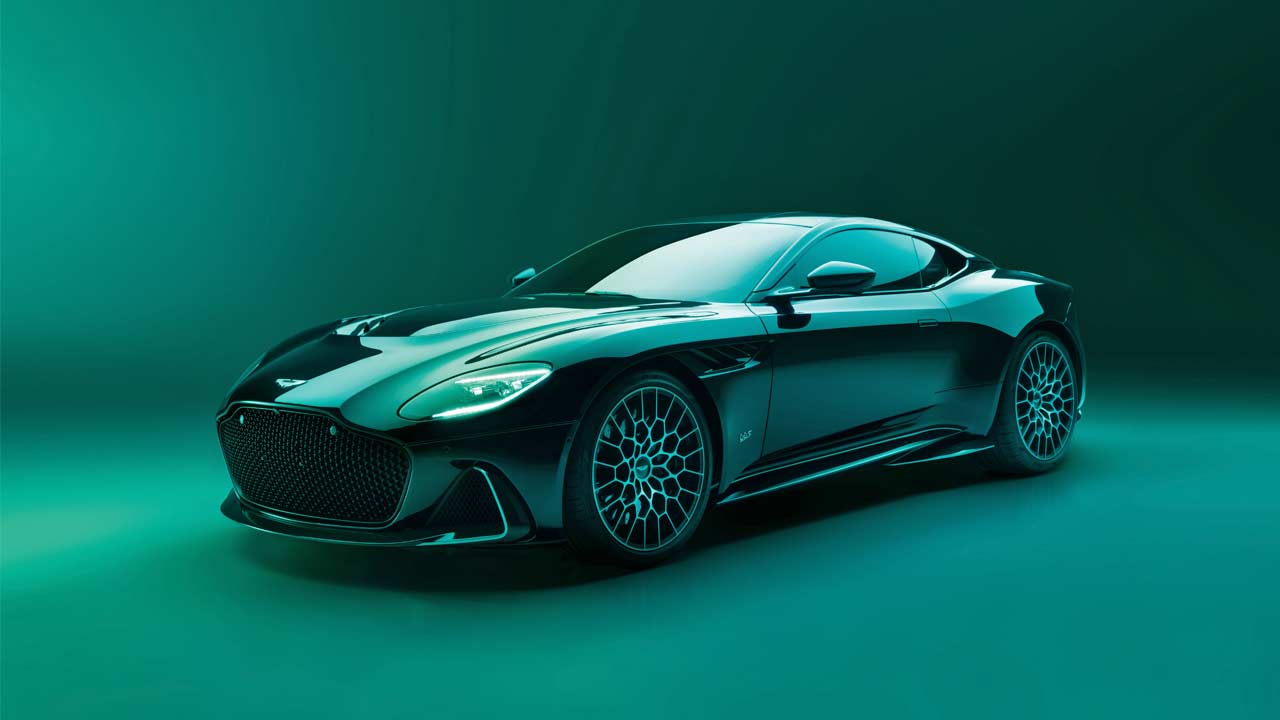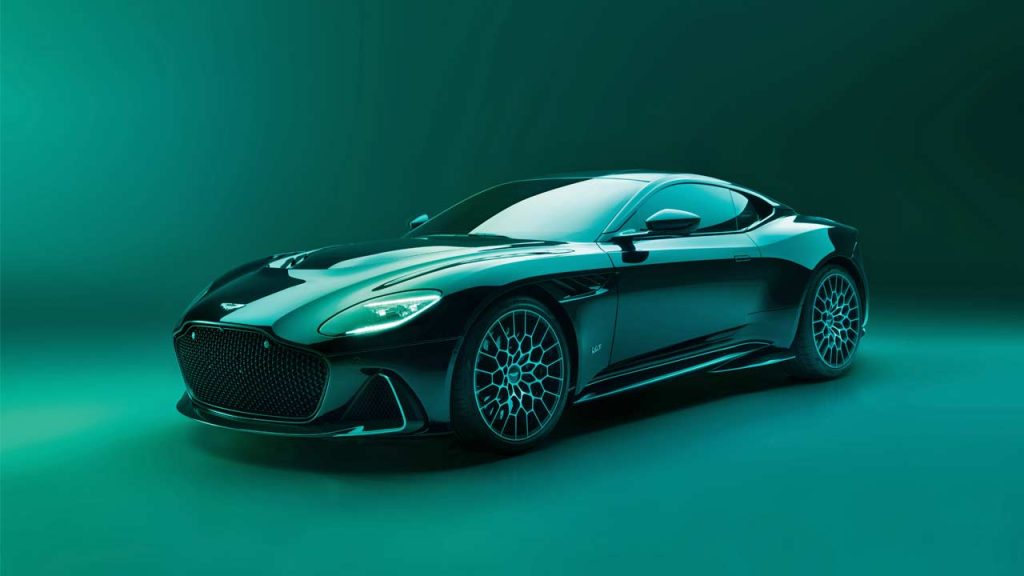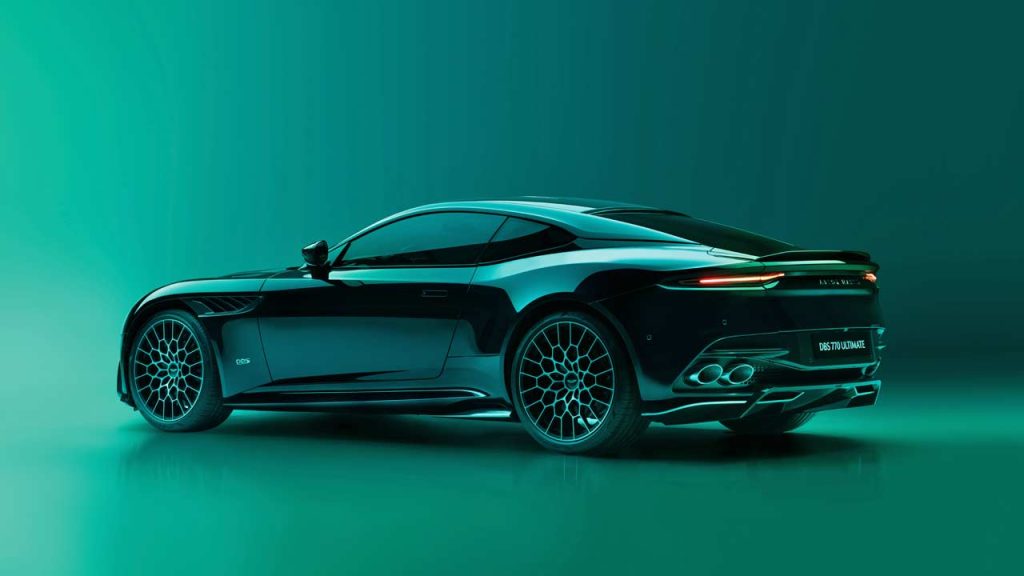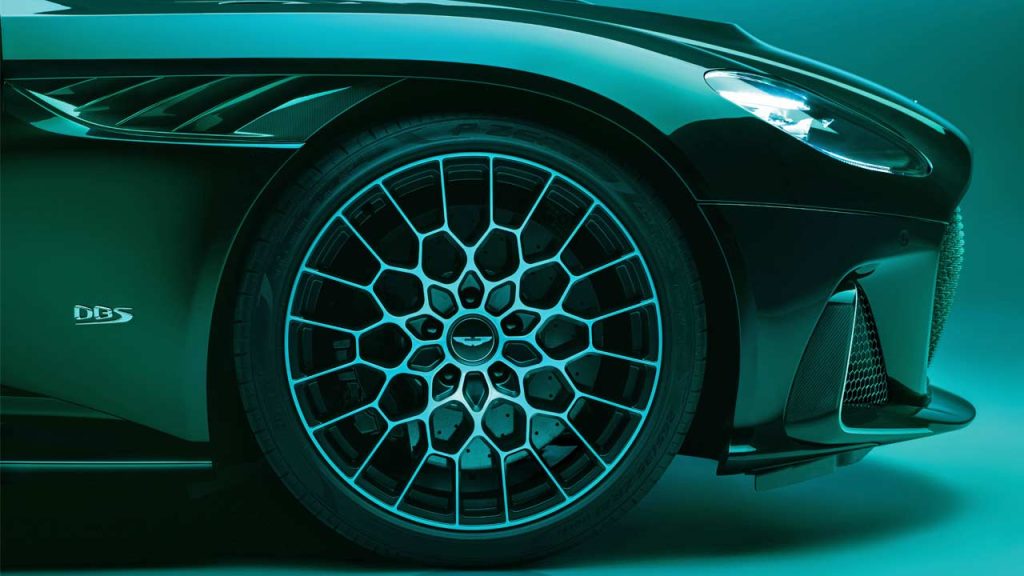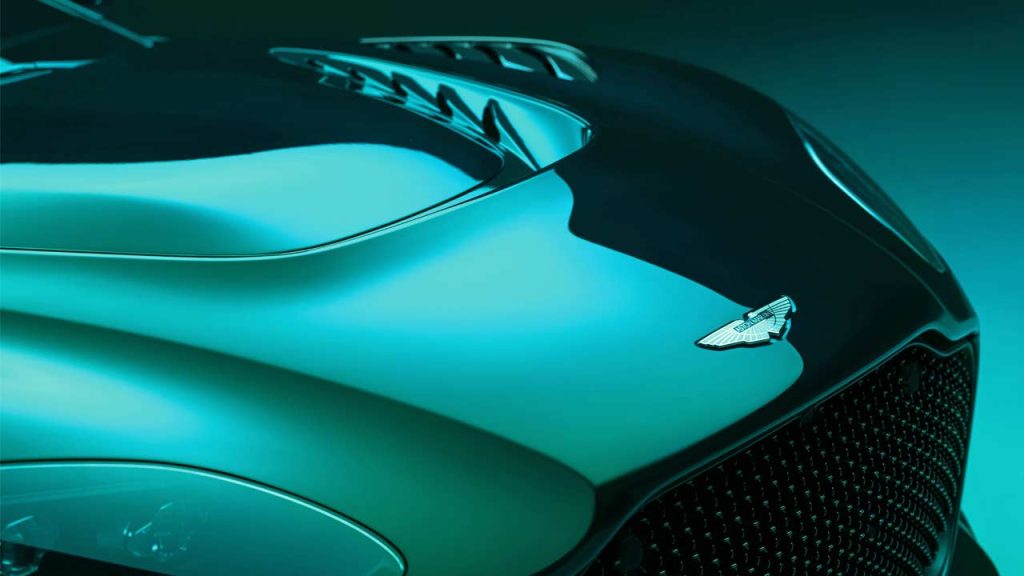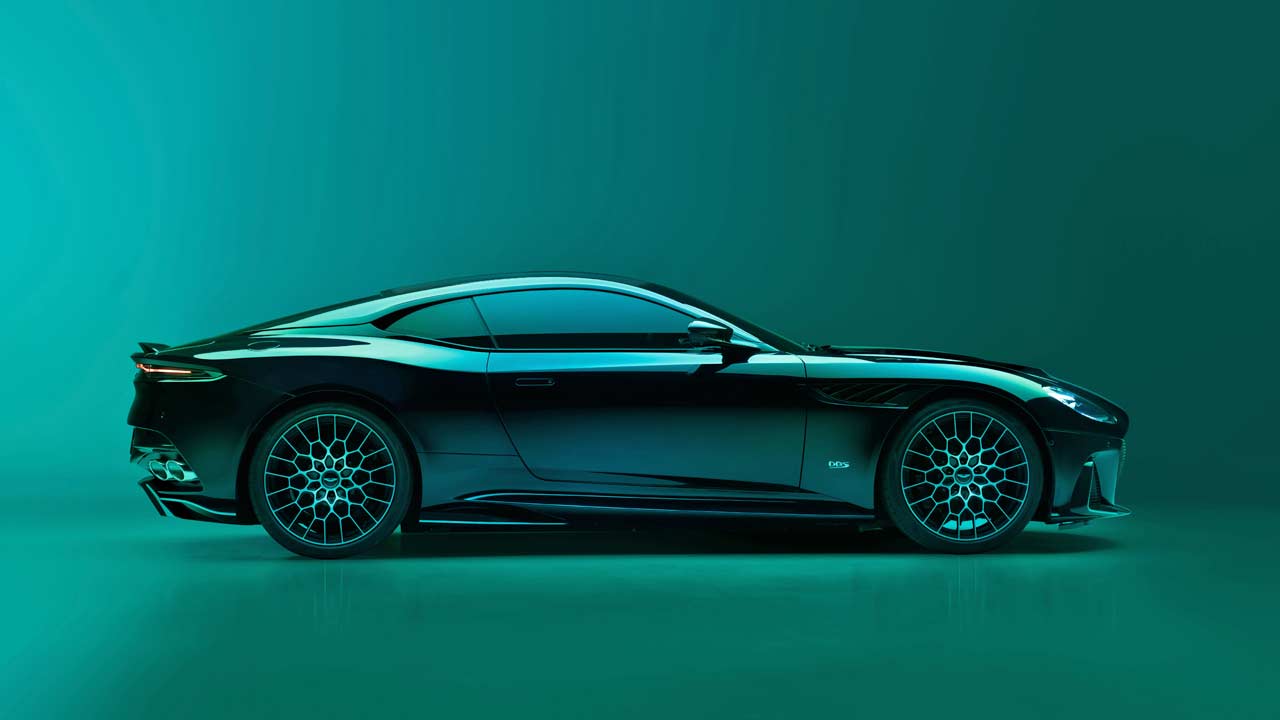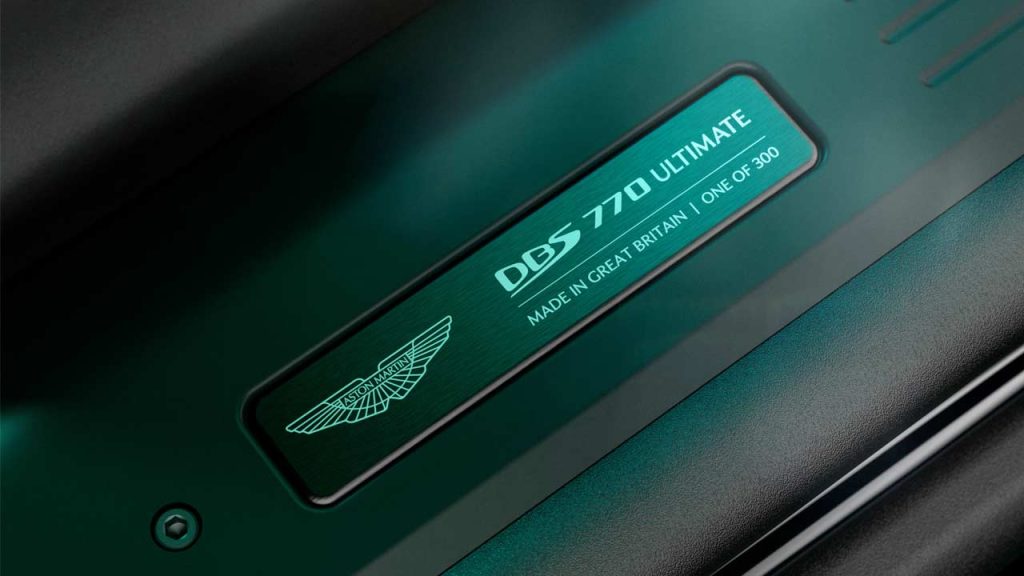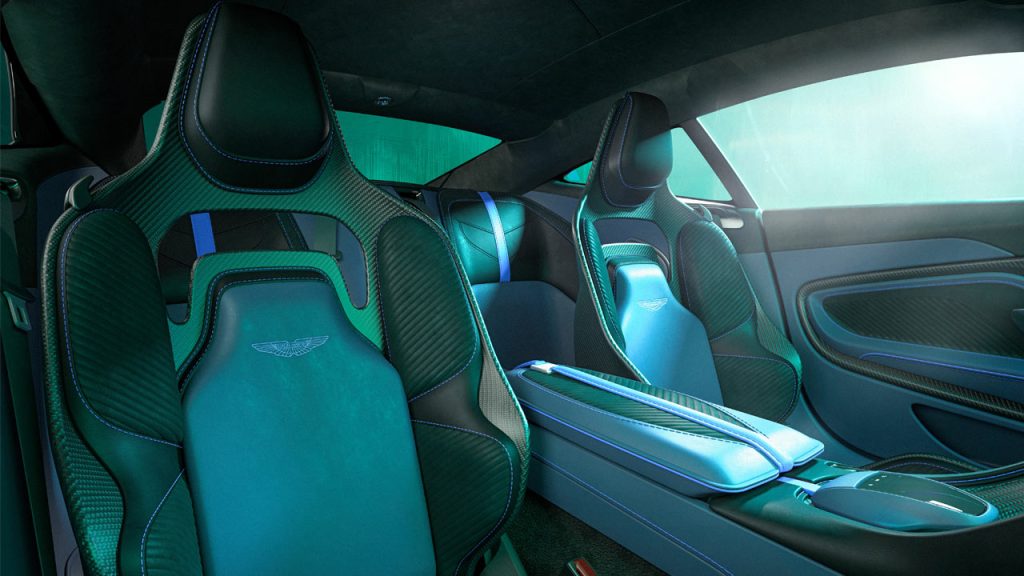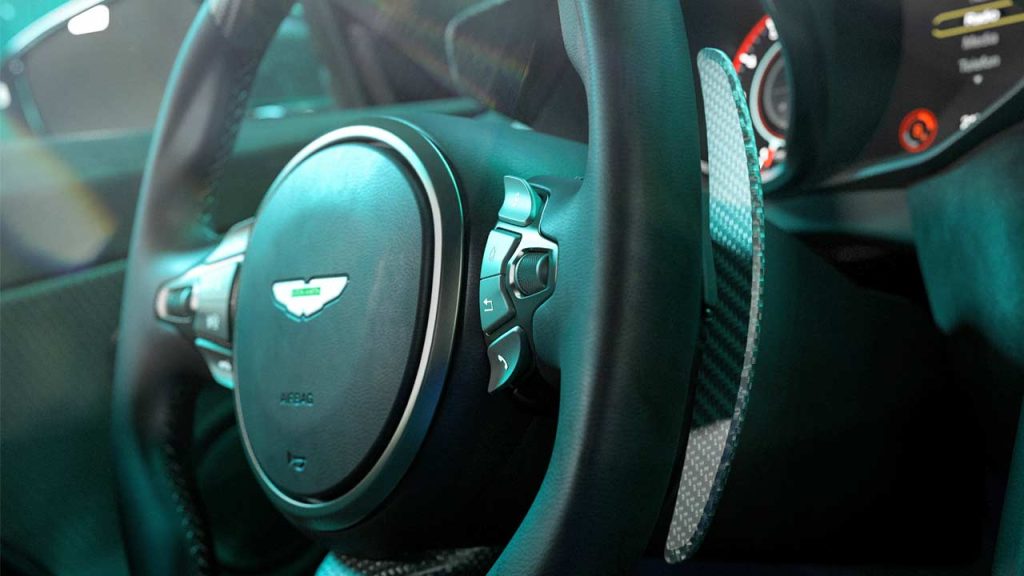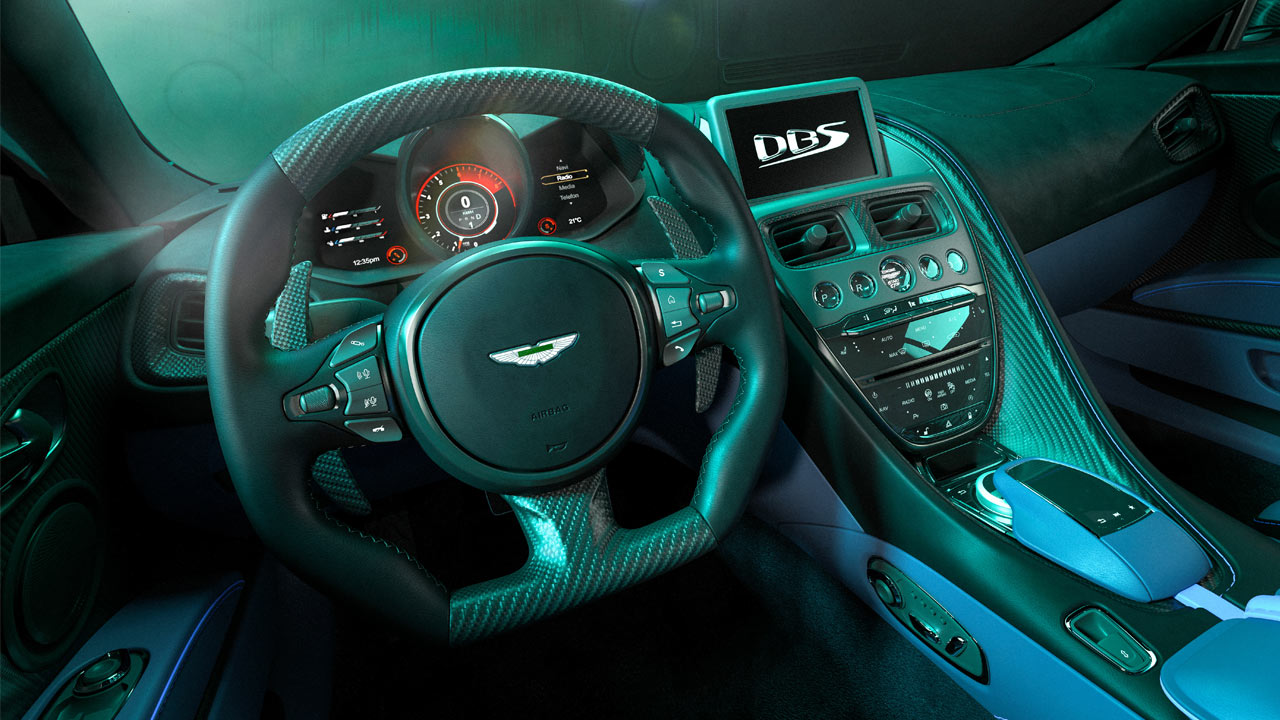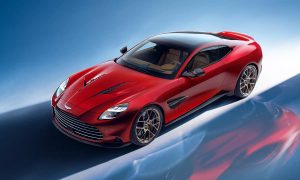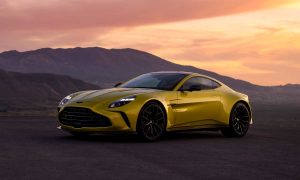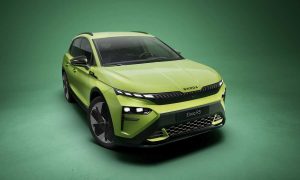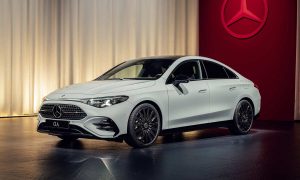Aston Martin is bidding goodbye to the current generation DBS with the DBS 770 Ultimate—billed as the most powerful production Aston Martin ever. Production is limited to 499 units globally (300 Coupes and 199 Volantes), with deliveries scheduled to commence in Q3 2023.
The Ultimate changes begin with the aerodynamic enhancements that include a redesigned bonnet with a horseshoe-shaped vent and louvers; fender louvers; bumper outer intake inserts; rocker panel inserts, and rear diffuser inserts. The car rides on Valkyrie-style 21-inch wheels (in Satin Silver finish or Satin Black finish) wrapped with Pirelli P Zero high-performance tires measuring 265/35 at the front and 305/30 at the rear. The DBS 770 Ultimate uses the same 410 mm x 38 mm front discs and 360 mm x 32 mm rear discs as fitted to the DBS.
The company said that the Adaptive Damping System (ADS) has also been enhanced with “unique damper calibration and software tune focusing on control and composure without compromising the ride quality”. And, in order to achieve “engaging character and heightened steering feel”, the front-end lateral stiffness has been improved by 25% via an enhanced front cross member and thicker rear undertray—which is also said to increase global torsional stiffness by 3%.
For the cockpit, you get Sports Plus seats trimmed in full semi-aniline leather and Alcantara, featuring a ‘fluted’ quilt and perforation pattern as standard. Performance seats are optionally available. There are some interesting contrast colors going on, but I guess the Q division can bespoke those as well. The central armrest features a leather strap and buckle badge featuring a laser-etched DBS 770 Ultimate logo. Carbon fibre shift paddles are included as standard.
The 5.2-litre V12 biturbo motor which was developed with Ford’s help decades ago, here in the Ultimate application develops 566 kW (770 metric hp) at 6,500 rpm and 900 Nm (664 lb-ft) of torque from 1,800 rpm to 5,000 rpm. Compared with the regular DBS, you get 45 metric hp more here, thanks to, among other things, a 7% increase in boost pressure.
Power and torque are fed through a ZF 8-speed automatic transmission and a mechanical Limited-Slip Differential (LSD) at the rear of the car. Of course, the gearbox gets a model-specific calibration for shift speeds and driver engagement. Kerb weight (including light-weight options) is claimed to be 1,845 kg (4,068 lbs). The official 0-100 km/h (62 mph) sprint time is claimed to be 3.4 seconds, and the top speed is claimed to be 340 km/h (211 mph).

Leave a Reply
Note: Comments that are unrelated to the post above get automatically filtered into the trash bin.
